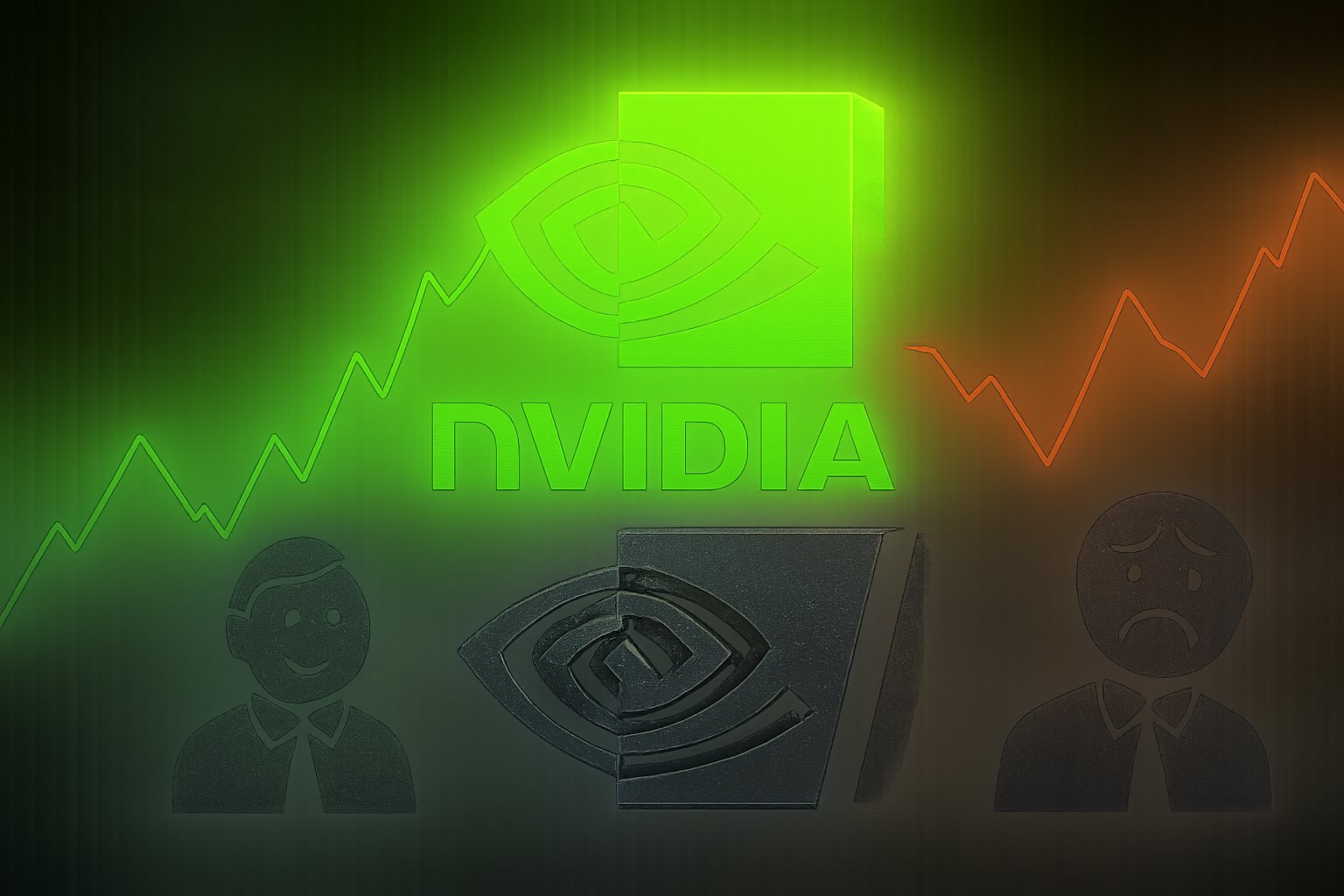
AI CERTS
1 day ago
Nvidia’s Expectations Paradox Roils Traders
Market Euphoria Meets Reality
Nvidia posted $57 billion revenue and 73.4% gross margin. Furthermore, Q4 guidance reached $65 billion. Those figures beat consensus by wide margins. Yet the stock slipped roughly 3% by the close. Many desks called the Wednesday beat insufficient because positioning already discounted bigger upside. Moreover, option implied volatility peaked before results. Consequently, profit-taking overwhelmed early buyers.

Sentiment swung once traders saw futures wobble. In contrast, retail chat rooms still cheered the print. The gap underscored how sentiment override fundamentals can dominate short windows. A latent psychological threshold around $750 per share became resistance.
Record revenue impressed investors, yet price action disappointed. Nevertheless, understanding this tension sets the stage for deeper analysis.
Numbers Beat Street Forecasts
CEO Jensen Huang declared, “Blackwell sales are off the charts.” Meanwhile, CFO Colette Kress cited $0.5 trillion pipeline visibility. Additionally, data-center revenue jumped 66% year over year. Analysts like Wedbush’s Dan Ives toasted the results.
However, the expectations paradox resurfaced. Hyper-bullish whisper numbers exceeded official guidance. Therefore, traders judged the Wednesday beat insufficient relative to lofty hopes. Consequently, a classic “sell the news” unfolded.
- Revenue: $57 billion, +62% y/y
- Data-center revenue: $51.2 billion, +66% y/y
- Guided Q4 revenue: $65 billion ±2%
These metrics validate structural GPU demand. Nevertheless, valuation concerns tempered celebrations. The section shows that raw numbers alone rarely settle debates. Transitioning forward, trader psychology demands attention.
Traders Eye Valuation Risks
Michael Burry questioned depreciation, buybacks, and dilution. Moreover, some banks highlighted concentration risk within passive indexes. Consequently, funds trimmed exposures to reduce portfolio beta. The psychological threshold around one-trillion capitalization amplified caution.
In contrast, bulls argued growth justifies premium multiples. Furthermore, AI infrastructure spending seems durable. Yet the expectations paradox lingered because each quarter must outpace escalating hopes. Therefore, any slip invites rotation.
Macro factors intensified stress. Meanwhile, uncertain Federal Reserve signals lifted discount rates. As a result, long-duration tech cash flows faced heavier scrutiny. These valuation debates summarize why a great quarter still met resistance. Next, mechanics of the reversal warrant investigation.
Flow Mechanics Drive Reversal
Options desks priced an 8% implied swing pre-earnings. Subsequently, gamma hedging forced market-makers to sell shares when momentum turned. Additionally, systematic funds de-risked after volatility spikes. Consequently, liquidity thinned into the afternoon, magnifying moves.
The Thursday selloff rippled across semiconductor peers. Moreover, Nasdaq futures slid 2.2% as AI leaders dragged indexes lower. Such flows proved that sentiment override fundamentals is not rhetoric; it is coded in trading algorithms.
Technical triggers reinforced the psychological threshold. Once shares broke the 50-day average, stop orders cascaded. Nevertheless, flow pressure can reverse quickly once hedges rebalance. Understanding these dynamics aids risk management. Now, attention shifts to the wider industry narrative.
Wider AI Bubble Debate
Supporters tout exponential GPU demand for training and inference. Moreover, hyperscalers keep announcing multiyear capex plans. However, skeptics fear over-investment. Energy constraints and uncertain monetization spark bubble comparisons.
The expectations paradox influences both camps. Bulls highlight each blowout as validation, while bears cite every Thursday selloff as cautionary. Consequently, headline cycles oscillate rapidly.
Several strategists framed a list of monitoring points:
- Realization of the $0.5 trillion backlog
- Hyperscaler deployment timelines
- Export control developments
- Options positioning trends
- Fed policy direction
Professionals can deepen insight through the AI Executive™ certification. Such programs sharpen strategic perspective amid noisy narratives.
This debate shows how narratives evolve beyond earnings. However, strategic signals provide clearer guidance going forward.
Signals To Watch Next
Quarterly execution remains critical. Additionally, hyperscaler budgets will reveal demand durability. Furthermore, power-grid constraints may slow cluster rollouts.
Market structure signals matter too. Subsequently, falling implied volatility could invite buyers back. Meanwhile, any fresh Thursday selloff would expose lingering fragility.
Investors must also track whether sentiment override fundamentals continues. If price stabilizes above the recent psychological threshold, confidence may rebuild. Otherwise, the expectations paradox could resurface during future announcements, reviving claims of a bubble.
These forward indicators synthesize macro, micro, and flow inputs. Therefore, disciplined monitoring can convert uncertainty into opportunity.
Section highlights emphasize critical upcoming catalysts. Consequently, a concise conclusion now ties themes together.
Conclusion
Nvidia delivered historic growth, yet traders still sold. The expectations paradox explained why a Wednesday beat insufficient narrative gained traction and a Thursday selloff followed. Flow mechanics showed how sentiment override fundamentals under volatile conditions. Furthermore, valuation debates and a looming psychological threshold intensified scrutiny. Professionals should monitor execution, capex trends, policy shifts, and positioning. Additionally, enhancing expertise through the linked certification can sharpen competitive edges. Act now, deepen knowledge, and navigate future earnings with confidence.



